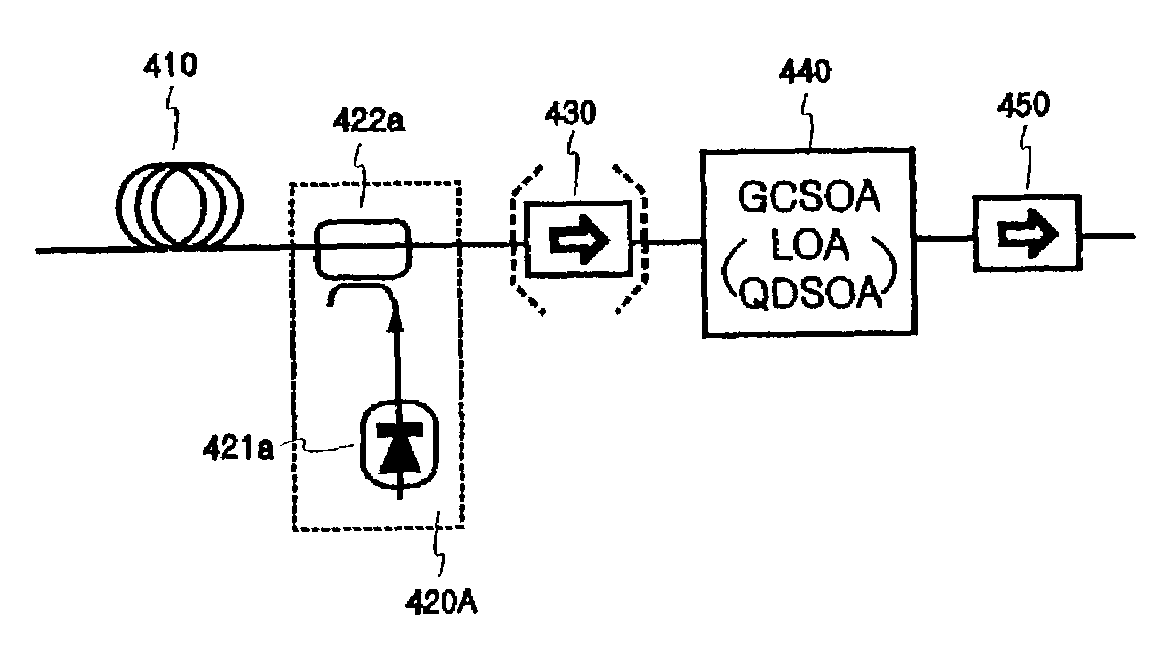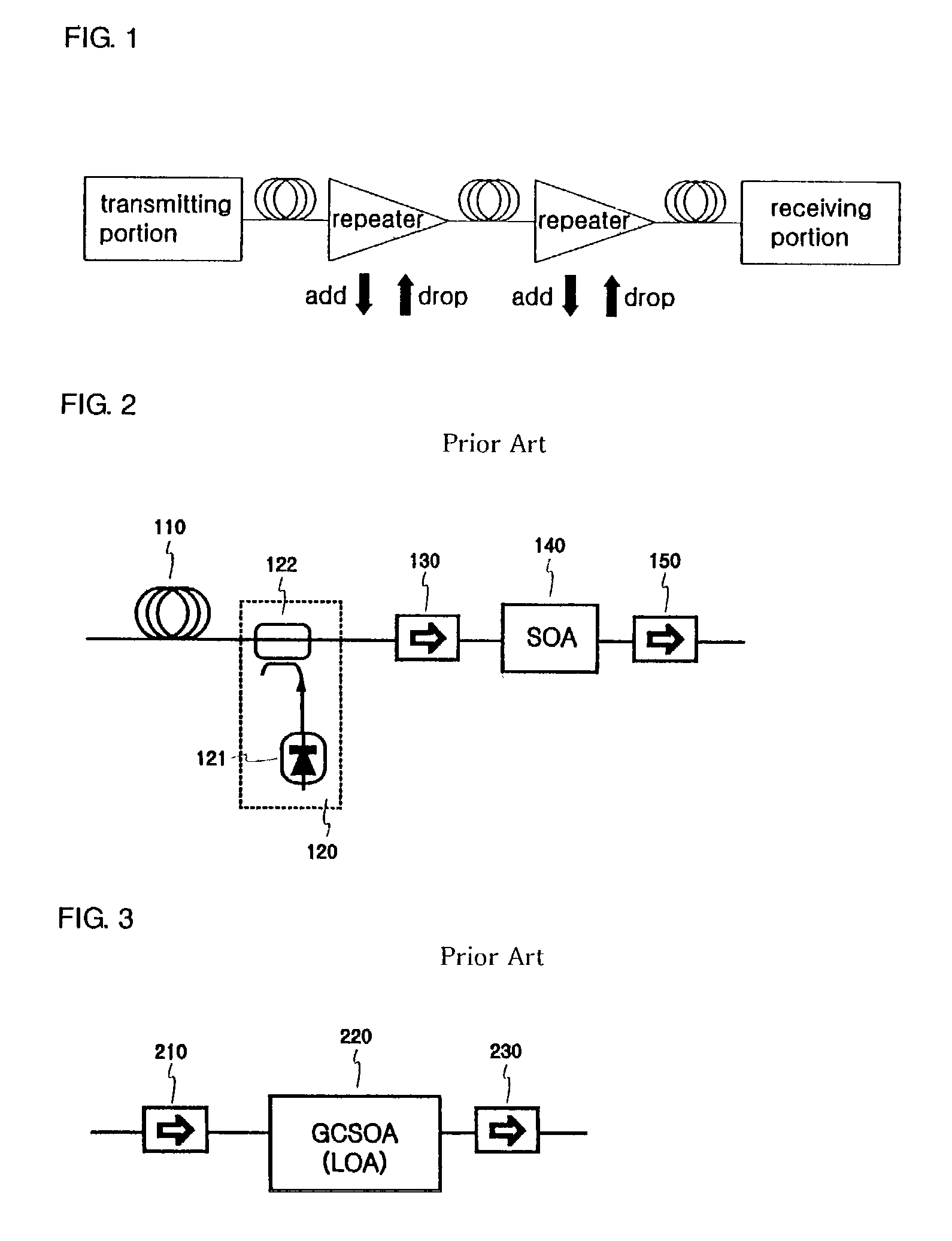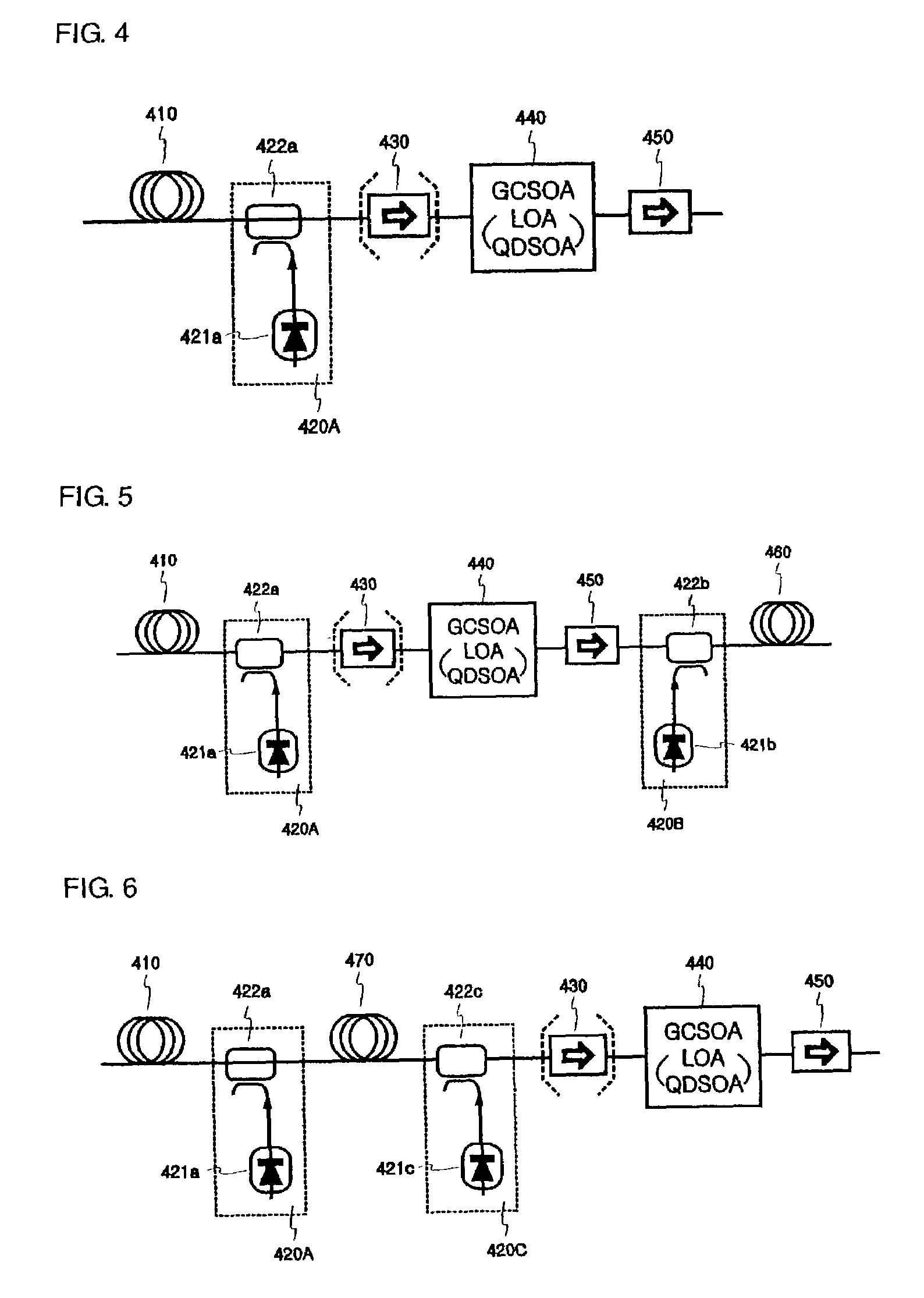Hybrid optical amplifier coupling Raman fiber amplifier and semiconductor optical amplifier
a technology of hybrid optical amplifier and fiber amplifier, which is applied in the field of hybrid optical amplifier, can solve the problems of poor noise figure, low power output, and serious cross-talk between channels, and achieve excellent gain clamping characteristic, low noise figure, and sufficient gain
- Summary
- Abstract
- Description
- Claims
- Application Information
AI Technical Summary
Benefits of technology
Problems solved by technology
Method used
Image
Examples
first embodiment
[0033]FIG. 4 is a block diagram illustrating a hybrid optical amplifier that couples a Raman fiber amplifier and a gain clamped semiconductor optical amplifier according to the present invention.
[0034]As shown in FIG. 4, the hybrid optical amplifier includes a transmission optical fiber 410, an Raman amplification laser diode 421a, a wavelength division multiplexer 422a which passes an incident signal light and radiates a laser light from the Raman amplification laser diode 421a in a reverse direction of the incident signal light, an isolator 430 which isolates a Raman optical amplifying portion 420A from a gain clamped semiconductor optical amplifier 440, and the gain clamped semiconductor optical amplifier 440 which amplifies a optical signal passing through the isolator 430. Therefore, an optical signal incident to the transmission optical fiber 410 is radiated to the isolator 430 through the wavelength division multiplexer 422a.
[0035]At this time, a laser light generated from t...
second embodiment
[0037]FIG. 5 is a block diagram illustrating a hybrid optical amplifier coupling a Raman fiber amplifier and a gain clamped semiconductor optical amplifier according to the present invention. The hybrid optical amplifier of FIG. 5 includes a Raman optical amplifying portion 420B and a transmission optical fiber 460 additionally arranged to a rear portion of the hybrid optical amplifier of FIG. 4, and has a configuration in which the optical signal is amplified through the gain clamped semiconductor optical amplifier 440 and becomes incident through the second isolator 450 and is Raman-amplified once more.
[0038]Therefore, whereas the output of the gain clamped semiconductor optical amplifier is restricted (a currently available product outputs about 10 dBm) and so a transmission is difficult when either a long distance transmission or a high output is required, the hybrid optical amplifier of FIG. 5 can perform an additional amplification of more than 5 dB using the relatively low Ra...
third embodiment
[0039]FIG. 6 is a block diagram illustrating a hybrid optical amplifier coupling a Raman fiber amplifier and a gain clamped semiconductor optical amplifier according to the present invention. The hybrid optical amplifier of FIG. 6 is a structure that inserts a dispersion compensating fiber (DCF) 470 to compensate a chromatic dispersion of a digital signal accumulated while the optical signal passes through the transmission optical fiber. Additional loss comes from the DCF, components for add / drop of channels, or a variable attenuator. At this time, the loss is compensated by Raman-amplifying the DCF 470 in a forward or reverse direction. Additional gain can be obtained by supplying a higher pump power if needed. In this case, a signal amplification following the DCF 470 is the same as performed in the hybrid optical amplifier of FIG. 4.
PUM
 Login to View More
Login to View More Abstract
Description
Claims
Application Information
 Login to View More
Login to View More - R&D
- Intellectual Property
- Life Sciences
- Materials
- Tech Scout
- Unparalleled Data Quality
- Higher Quality Content
- 60% Fewer Hallucinations
Browse by: Latest US Patents, China's latest patents, Technical Efficacy Thesaurus, Application Domain, Technology Topic, Popular Technical Reports.
© 2025 PatSnap. All rights reserved.Legal|Privacy policy|Modern Slavery Act Transparency Statement|Sitemap|About US| Contact US: help@patsnap.com



